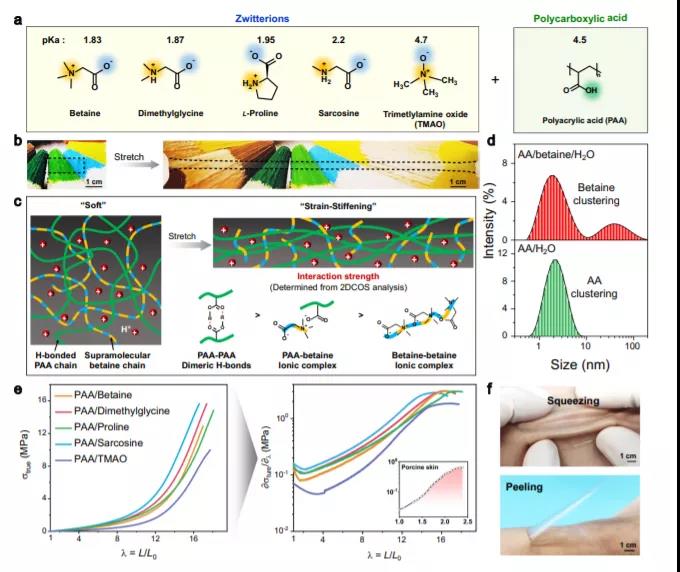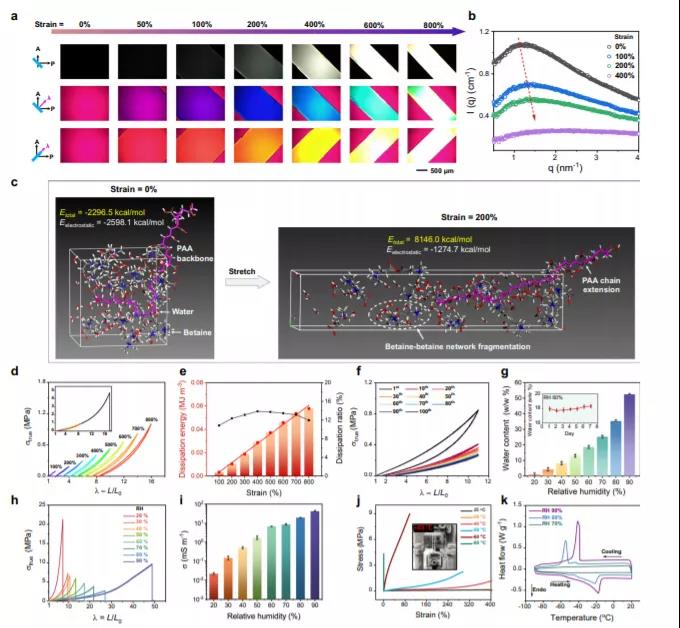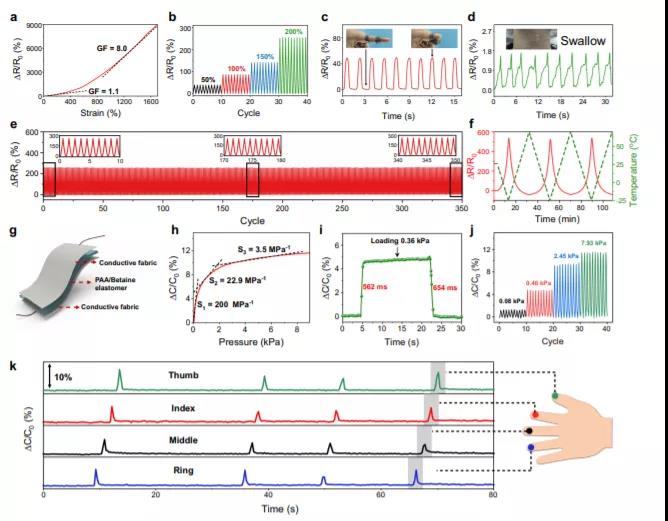Wu Peiyi / Sun Shengtong nature, Donghua University: new self repairing bionic materials
The stretchable ionic skin mimics the many senses of natural skin. For its application in advanced electronics, the advantages of good elastic recovery, self-healing and skin like nonlinear mechanical response (strain hardening) are very important. However, it is difficult to meet the above conditions in one material at the same time.
Recently, Professor Wu Peiyi and researcher sun Shengtong of Donghua University reported that a series of proton conducting ion skin with high elasticity, transparency, self-healing and strain hardening were designed and prepared by introducing entropy driven supramolecular zwitterion network into hydrogen bonded polycarboxylic acid chain network.

Unlike hydrogels and ionic gels, which rely on a large number of solvents, the current ionic elastomers only have equilibrium water content. In addition, the amphoteric network composed of weakly coordinated zwitterions contributes to the initial flexibility of the ionic elastomer, and then breaks during the stretching process, So as to form a very hard hydrogen bonded polycarboxylate network.

Based on the sequential debonding of two competing dynamic networks and the rapid recombination of zwitterions, typical polyacrylic acid (PAA) / betaine elastomers have ultra-high elongation (1600%), obvious strain hardening (24 times higher modulus), complete self-healing (almost 100%) and excellent elastic recovery (97.9%) ± 1% and < 14% lag). At the same time, the presence of zwitterions also makes ionic elastomers have the advantages of moisture retention and antifreeze, making them stable to conduct protons even under harsh conditions. In addition, the ionic skin has strong adhesion, which is easy to adhere to various substrates and human skin, but it is also easy to peel off due to the inherent tension strengthening effect. More interestingly, ionic skin can be recovered by rapidly dissolving in water and recasting in air.
As a skin sensor, ion elastomer can respond to the change of strain and temperature in time, and can be further integrated with elastic conductive fabric. As an ion intelligent sensor, it can sense the change of pressure, showing its great application potential in wearable electronic products.

This work paves the way for the design of robust materials with skin like complex sensory and mechanical properties, and is expected to stimulate a series of applications of bionic materials in sensors, wearable electronic products, intelligent textiles, human-computer interface, etc.
This information is from the Internet for academic exchange only. If there is any infringement, please contact us to delete it immediately
18915694570
Previous: ACS Macro Letters Xu F


